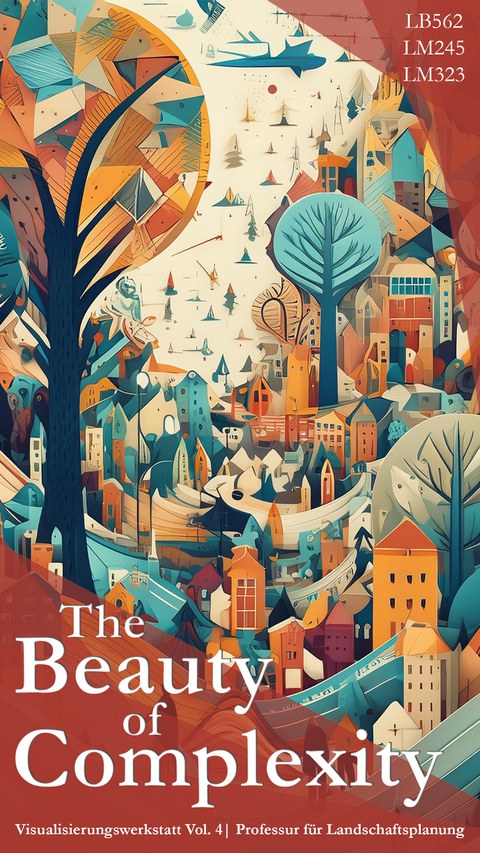Visualization workshop VOL. 4 from 2 - 6 December 2024
Students of landscape architecture learn how to communicate their own ideas to users and interested parties. As this is mainly about design, eloquent rhetoric alone is not enough. Rather, students must prove during their studies that they can visualize their solutions convincingly and comprehensibly using modern tools. From pencils to the 3D visualization program Lumion, there are countless options available for this - and with imaging AI, the possibilities have increased to an as yet unforeseeable level. However, experience shows that only a fraction of this potential for developing a personal portfolio of visualization techniques can be tested, let alone deepened, in the course of a degree course.
This is where the visualization workshops of the Landscape Planning teaching and research area come in, which are offered as modules LB562, LM245 and LM333 for Bachelor's and Master's students. From 2 to 6 December 2024, the fourth edition of the visualization workshop will start this winter semester under the motto "The Beauty of Complexity". With the support of Maxim von Gagern and Romy Hanke, participants will spend five intensive days following the VIEL zu GUT strategy of not immediately rushing into a visualization technique and an associated product, but rather investing a lot of time in trial and error at the beginning in order to then work on the most promising variants to an appropriate level of maturity.
This year's focus will be on the visualization of complex content. In the extremely broad field of work of landscape architects, it is important in many areas to communicate their own ideas in a way that is both accessible and unambiguous - usually using images and graphics. The "landscape" profession means that the content associated with it serves complex contexts, whether on a technical, design or legal level. In this respect, the "keep it short and simple" strategy is only a viable option to a limited extent, as it is precisely the synopsis of more complex contexts that can illustrate the power and quality of an idea. For example, plans of integrated concepts should make the most important points clear at first glance and yet allow the entire concept to be understood down to the last detail. Visualizations of future guiding principles should not only have an appealing effect but also highlight what corresponds to the underlying guiding principle, especially in the overall context. And ultimately, the clear but not overly simple presentation of technical, methodological or even legal contexts offers great potential for the justification of ideas compared to mere verbal explanations.
In this year's visualization workshop, participants will therefore be given challenges in the areas of "complex plans", "visualization of mission statements" and "complex interrelationships" in order to consolidate and expand their visualization skills. From all three areas, the aim is to develop the most diverse approaches possible for the implementation of visualizations, from which some promising ones will then be selected to be finalized at the end of the workshop. On the last day of the workshop, an exhibition of the results will be opened in the foyer of the BZW. The resulting visualizations will be presented to the public there for several weeks.

